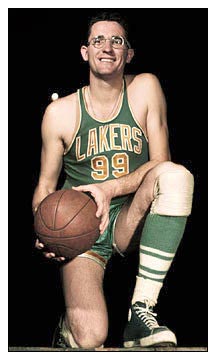
By Woodrow Carroll
In the 1990s when the Chicago Bulls captured six National Basketball Association (NBA) championships in a span of eight seasons, there was no clear-cut rival to the Bulls.
The Bulls, in championship series, 1991-1993, defeated the Los Angeles Lakers, Portland TrailBlazers, and Phoenix Suns in the first threepeat. With Michael Jordan back in the Bulls’ fold after his baseball sojourn, the Bulls’ championship run, 1996-1998, were against the Seattle SuperSonics in 1996 and the Utah Jazz in both 1997 and 1998.
Back-to-back conquests of the Jazz may have had the appearance of a rivalry, however, not really! The Jazz, coached by the late and or Bulls’ guard, Jerry Sloan, were led by Karl Malone and John Stockton, a fine team. But, there was no rivalry between the clubs.
The Minneapolis Lakers were the dominant pro team in the early 1950s with George Mikan, Jim Pollard, and Whitey Skog. Every year from 1949 through 1954, with the exception of 1951, the Lakers won NBA championships.
If you think home court is an advantage today, the pro teams in the 1950s had monster home advantages.
Minneapolis won back-to-back championships enter 1951 NBA playoffs. The Lakers made the fatal mistake of losing a home game to the Rochester Royals in the Western Division championship series. It was a best-of-five series and when the Royals took the next two games at home, the Lakers were no longer defending champs. To their credit, the Royals won the NBA championship in 1951. . The Royals were in Cincinnati by the late-1950s before becoming the Kansas City Kings-Kansas City/Omaha Kings and, today, they are the Sacramento Kings.
The NBA generally recognizes the 1947 Philadelphia Warriors as its first champion. The issue here is the names of other pro leagues operating then such as the NBL (National Basketball League) and BAA (Basketball Association of America).
Arguably, the best championship rivalry in the NBA might have been that between the Boston Celtics and St. Louis Hawks between 1957 and 1961. Four times in a five-season span, the two sides faced off against in the championship series. Twice, in 1957 and 1960, the series went a seven games.
Neither Boston nor St. Louis reached the NBA finals prior to 1957, however, each franchise was in place by then.
Bill Russell, who guided the Celtics to 11 championships in his 13 seasons with the franchise, joined Boston beginning with the 1956-1957 season. Tom Heinsohn was a Celtics’ rookie that season. Heinsohn won the NBA Rookie-of-the-Year Award that season, in part, because Russell joined the team late after Olympic Games commitments. Russell and his USA team won the Gold Medal with ease.
The Hawks with Bob Pettit and Cliff Hagen leading the way were formidable foes in the finals.
The opening game of the 1957 finals was a classic with the Hawks winning, 125-123 in double overtime in Boston. Back in Boston for all the marbles in game seven, it was another 125-123 double overtime game. Only Boston was the victor.
The 1958 finals saw Bob Pettit shine! Pettit scored 50 points in game six to give St. Louis a 110-109 victory that gave the Hawks a four games to two finals championship.
A funny thing happened to the Hawks in the 1959 finals. The Minneapolis Lakers, without Mikan who had retired three years earlier, took down the Hawks four games to two in the conference finals. The Lakers, led by NBA Rookie of the Year Elgin Baylor, proved to be no problem for the Celtics in the finals with Boston sweeping the Lakers, four games to zero.
The Celtics and Hawks were back in the finals in 1960. The series went seven games again with the Celtics a 122-103 victor in game seven.
The fourth and final chapter of the Celtics-Hawks finals’ clashes played out in 1961. Only a game three victory by St. Louis averted a Celtics’ sweep.
Since 1961 the Celtics have known repeated success. The Hawks? Not since 1961 has the franchise made it to the NBA finals. After the 1967-1968 NBA season, the Hawks moved to Atlanta where they remain today.

